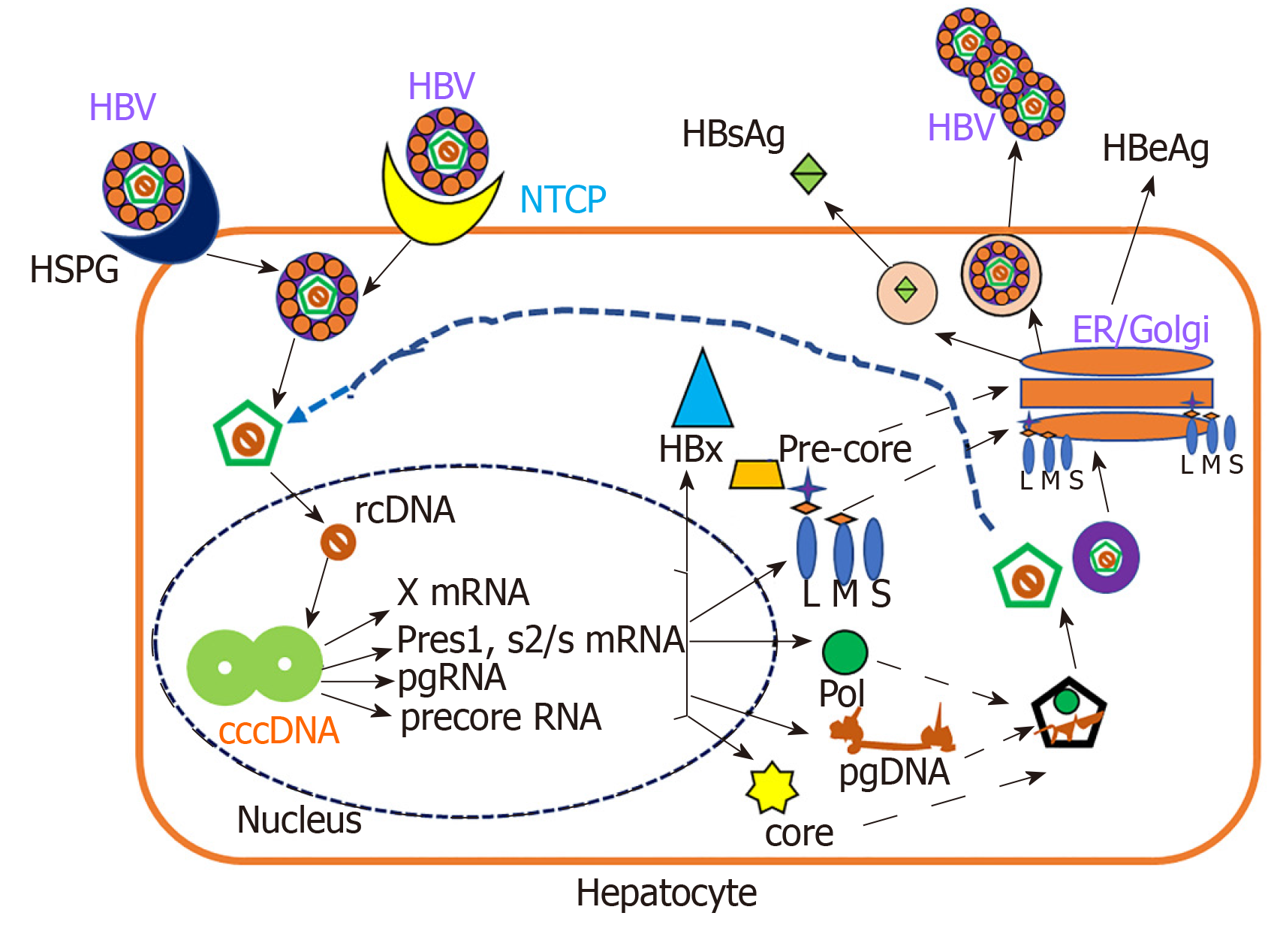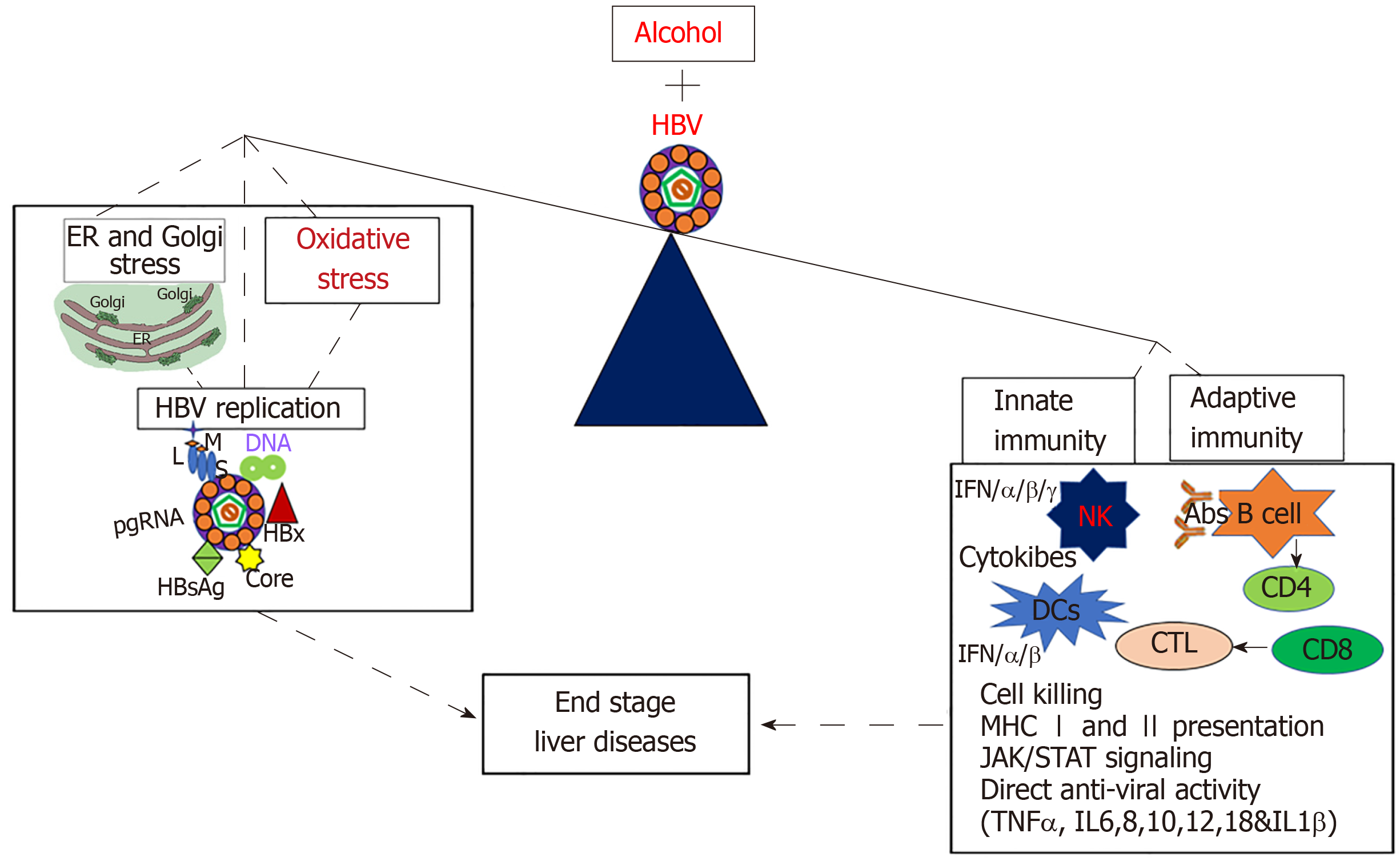Copyright
©The Author(s) 2020.
World J Gastroenterol. Mar 7, 2020; 26(9): 883-903
Published online Mar 7, 2020. doi: 10.3748/wjg.v26.i9.883
Published online Mar 7, 2020. doi: 10.3748/wjg.v26.i9.883
Figure 1 Schematic presentation of hepatitis B virus replication cycle.
Hepatitis B virus (HBV) enters hepatocytes via hepatocyte-expressing receptors for viral entry, either sodium taurocholate co-transporting polypeptide or heparan sulfate proteoglycan. The next stage is uncoating of the nucleocapsid, which takes place in cytosol and then formation of covalently closed circular DNA occurs in nucleus. Next, the transcription and translation of HBV specific genes take place and finally, the HBV virions are released to circulation. X protein, and three envelope proteins: LHBs (L), MHBs (M) and SHBs (S). HBV: Hepatitis B virus; NTCP: sodium taurocholate co-transporting polypeptide; cccDNA: Covalently closed circular DNA; HSPG: Heparan sulfate proteoglycan; rcDNA: Relaxed circular DNA; ER: Endoplasmic reticulum; Pol: DNA polymerase; Core: Capsid protein; HBeAg: Hepatitis B e antigen.
Figure 2 Mechanisms of alcohol and hepatitis B virus-infection induced liver injury.
Alcohol and hepatitis B virus together increase hepatitis B virus replication, oxidative stress, and cell organelle stress (endoplasmic reticulum and Golgi stress) which ultimately suppresses both adaptive and innate immune response, thereby leading to end- stage liver diseases. HBV: Hepatitis B virus; ER: Endoplasmic reticulum; IFN: Interferon; IL: Interleukin; MHC: Major histocompatibility complex; NK: Natural killers.
- Citation: Ganesan M, Eikenberry A, Poluektova LY, Kharbanda KK, Osna NA. Role of alcohol in pathogenesis of hepatitis B virus infection. World J Gastroenterol 2020; 26(9): 883-903
- URL: https://www.wjgnet.com/1007-9327/full/v26/i9/883.htm
- DOI: https://dx.doi.org/10.3748/wjg.v26.i9.883










